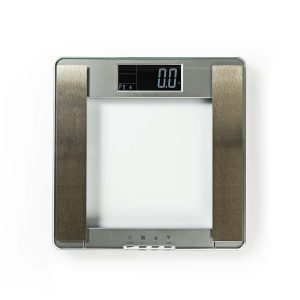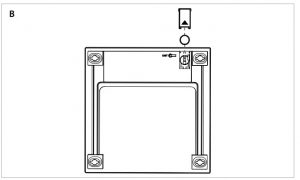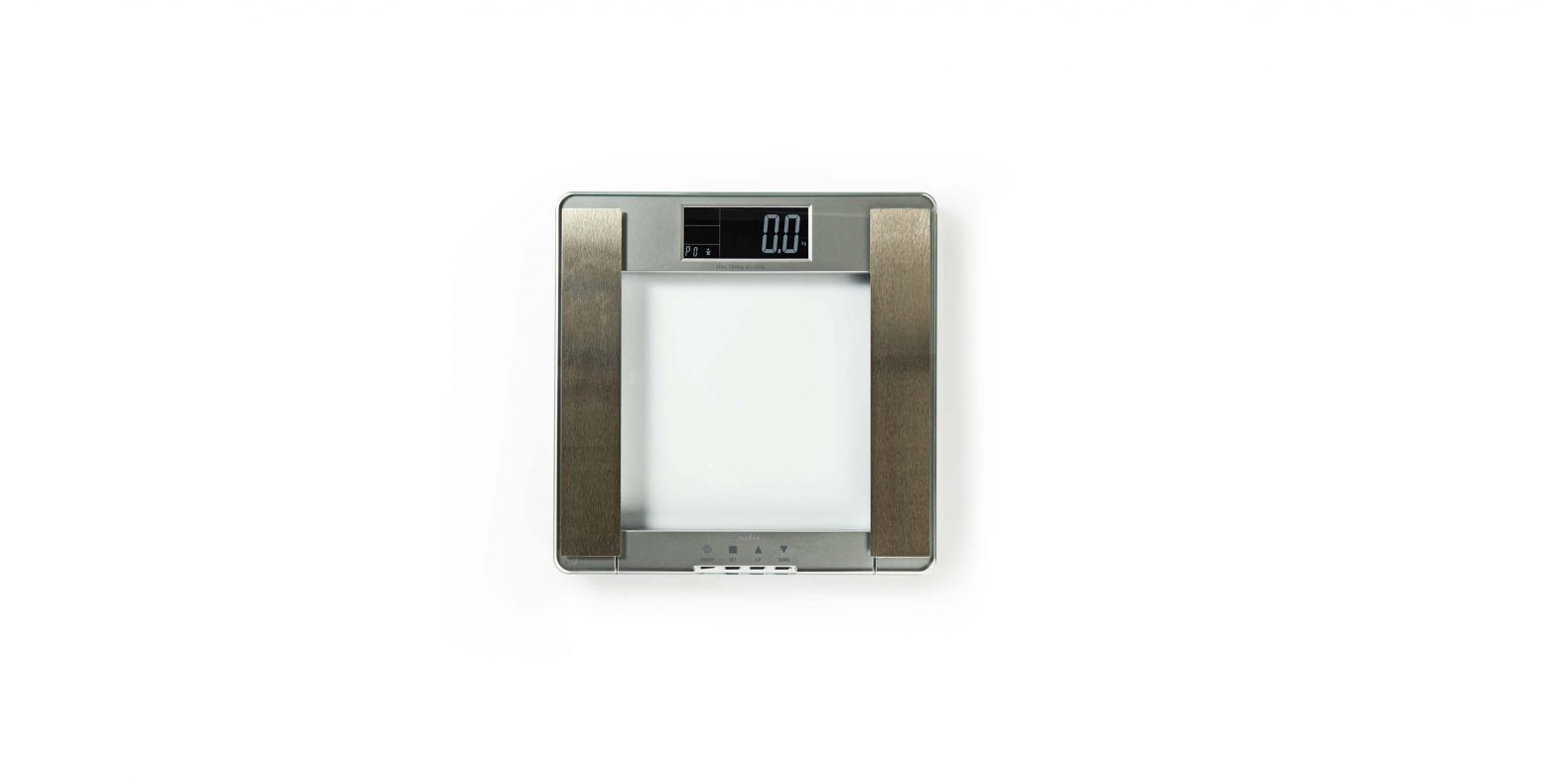nedis PESC500BK PESC500WT Digital Personal Scale User Guide
![]() For more information see the extended manual online: ned.is/pesc500bk ned.is/pesc500wt
For more information see the extended manual online: ned.is/pesc500bk ned.is/pesc500wt
Intended use
The PESC500BK / PESC500WT is a highly accuratepersonal scale that can measure in kilograms, pounds and stones. The product is intended for indoor use only. The product is not intended for professional use. Any modification of the product may have consequences for safety, warranty and proper functioning.
Specifications
| Product | Digital Personal Scale | ||
| Article number | PESC500BK / PESC500WT | ||
| Dimensions (l x w x h) | 300 x 300 x 17 mm | ||
| Battery type | 1 x 3 V lithium button cell (included) | ||
| Maximum weighing capacity | 150 kg | 330 lb | |
| Weighing accuracy | 100 g | 0.2 lb | |
| Units | Kg | Lb | St |
Main parts (image A)
- Display
- Weighing platform
- Mode button
- Battery compartment
Safety instructions
WARNING
- Ensure you have fully read and understood the instructions in this document before you install or use the product. Keep the packaging and this document for future reference.
- Only use the product as described in this document.
- Do not use the product if a part is damaged or defective. Replace a damaged or defective product immediately.
- Do not drop the product and avoid bumping.
- Do not expose the product to water or moisture.
- This product may only be serviced by a qualified technician for maintenance to reduce the risk of electric shock.
- Never immerse the product in water or place it in a dishwasher.
- Do not dismantle, open or shred batteries.
- Do not expose cells or batteries to heat or fire. Avoid storage in direct sunlight.
- Do not short-circuit a cell or a battery.
- Do not store cells or batteries haphazardly in a box or drawer where they may short-circuit each other or be short-circuited by other metal objects.
- Do not subject cells or batteries to mechanical shock.
- In the event of a battery leaking, do not allow the liquid to come in contact with the skin or eyes. If contact has been made, wash the affected area with copious amounts of water and seek medical advice.
- Do not mix cells of different manufacture, capacity, size or type within a product.
- Only use the battery type(s) recommended in this document.
- Keep cells and batteries clean and dry.
- Retain the original product literature for future reference.
- When possible, remove the battery from the product when not in use.
- Do not remove a cell or battery from the original packaging until required for use.
- Do not use any cell or battery that is not designed for use with the product.
- Use only the cell or battery in the application for which it was intended.
- Wipe the cell or battery terminals with a clean dry cloth if they become dirty.
- Battery usage by children should be supervised.
- Observe the plus (+) and minus (–) marks on the cell, battery and equipment and ensure correct use.
- Dispose of the cell or battery properly.
- Seek medical advice immediately if a cell or a battery has been swallowed.
Placing the batteries (image B)
- Open the battery compartment A4.
- Place 1 lithium button cell into A4.
- Observe the plus (+) and minus (–) marks on the cell, battery and equipment and ensure correct use.
- Close A4.
Explanations of the symbols
| Symbol | Explanation |
 |
Overload indication |
 |
Low battery indication |
 |
Re-test |
Press the mode button A3 to switch between the units: kilograms, pounds or stones.


References
[xyz-ips snippet=”download-snippet”]



